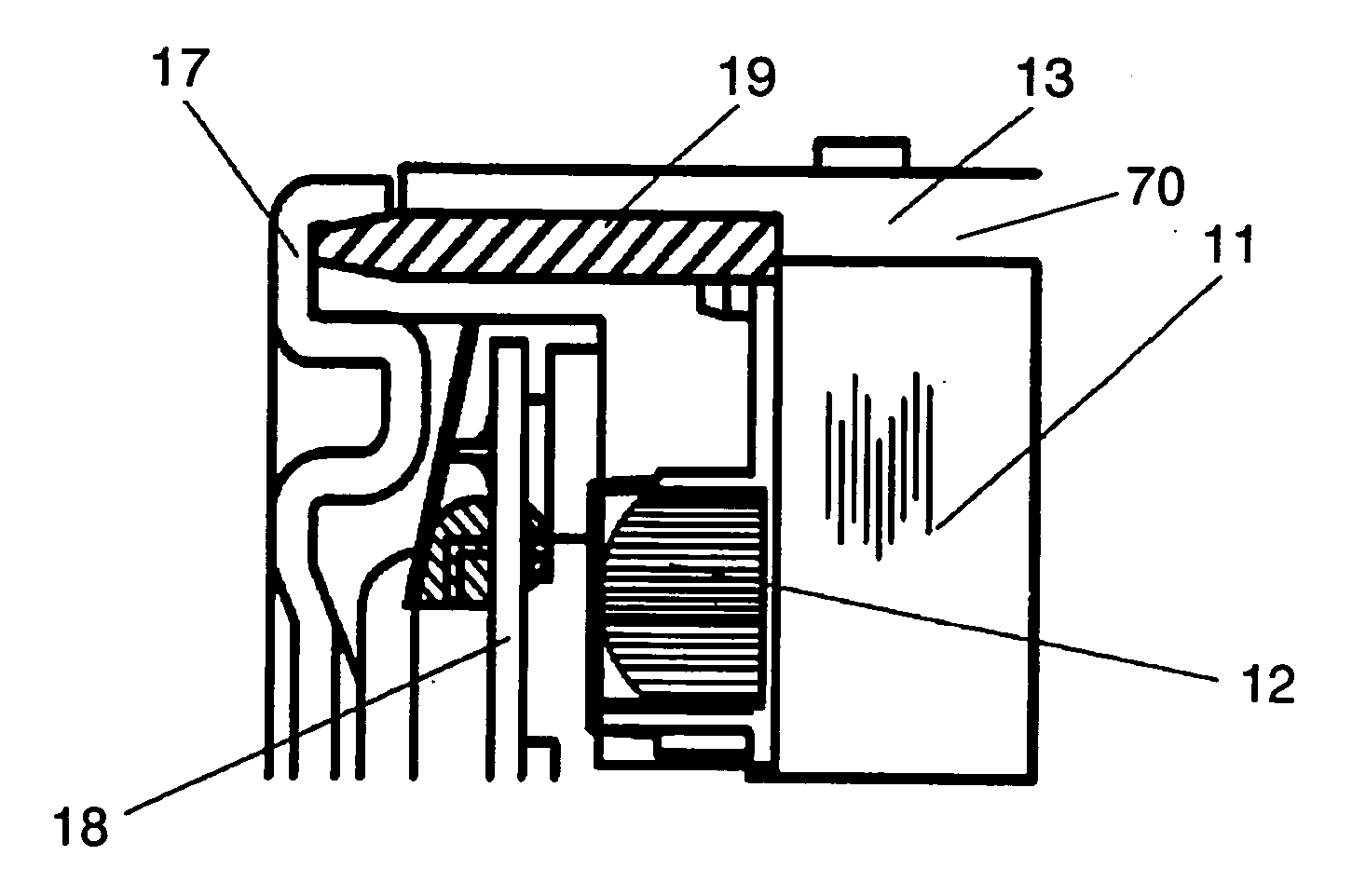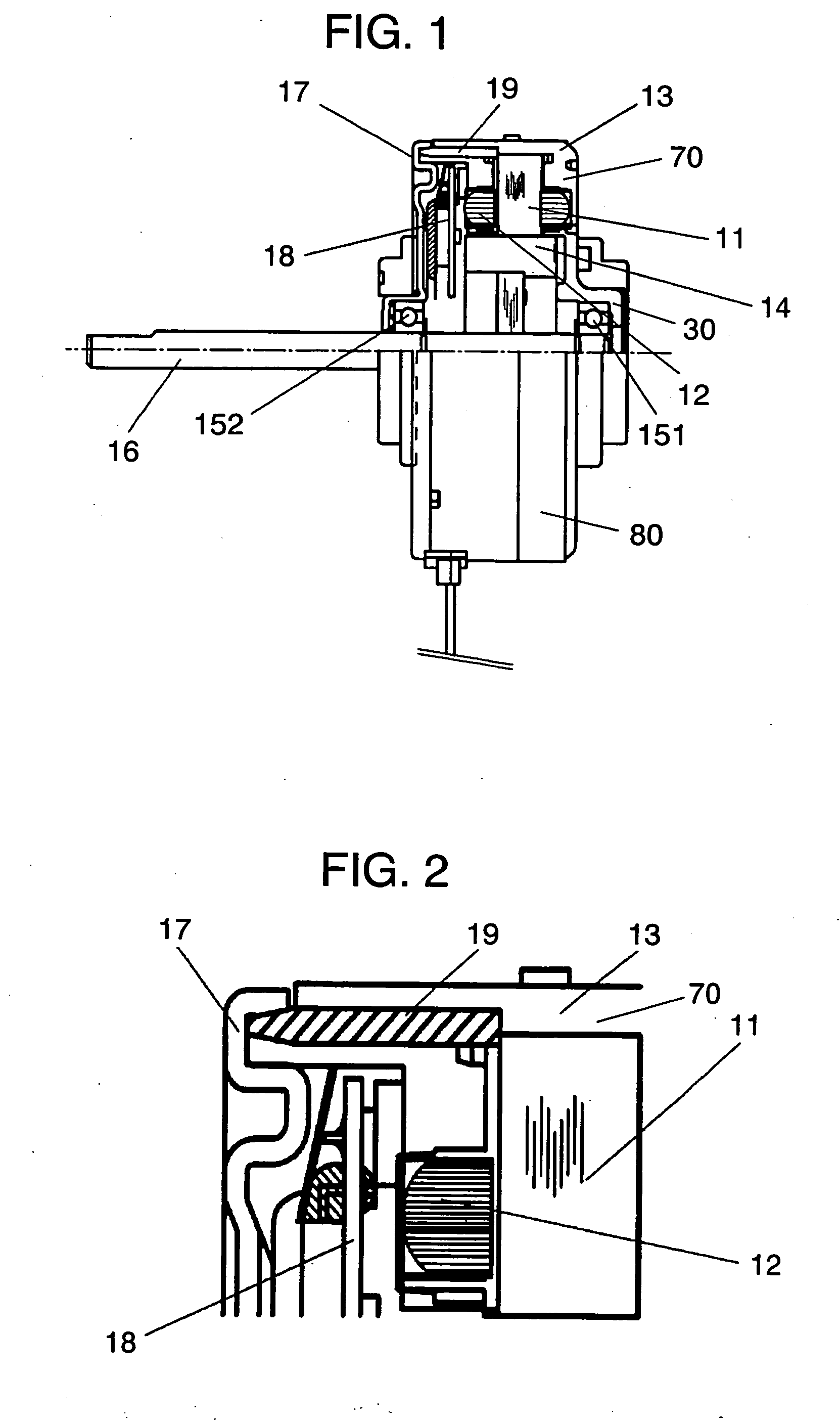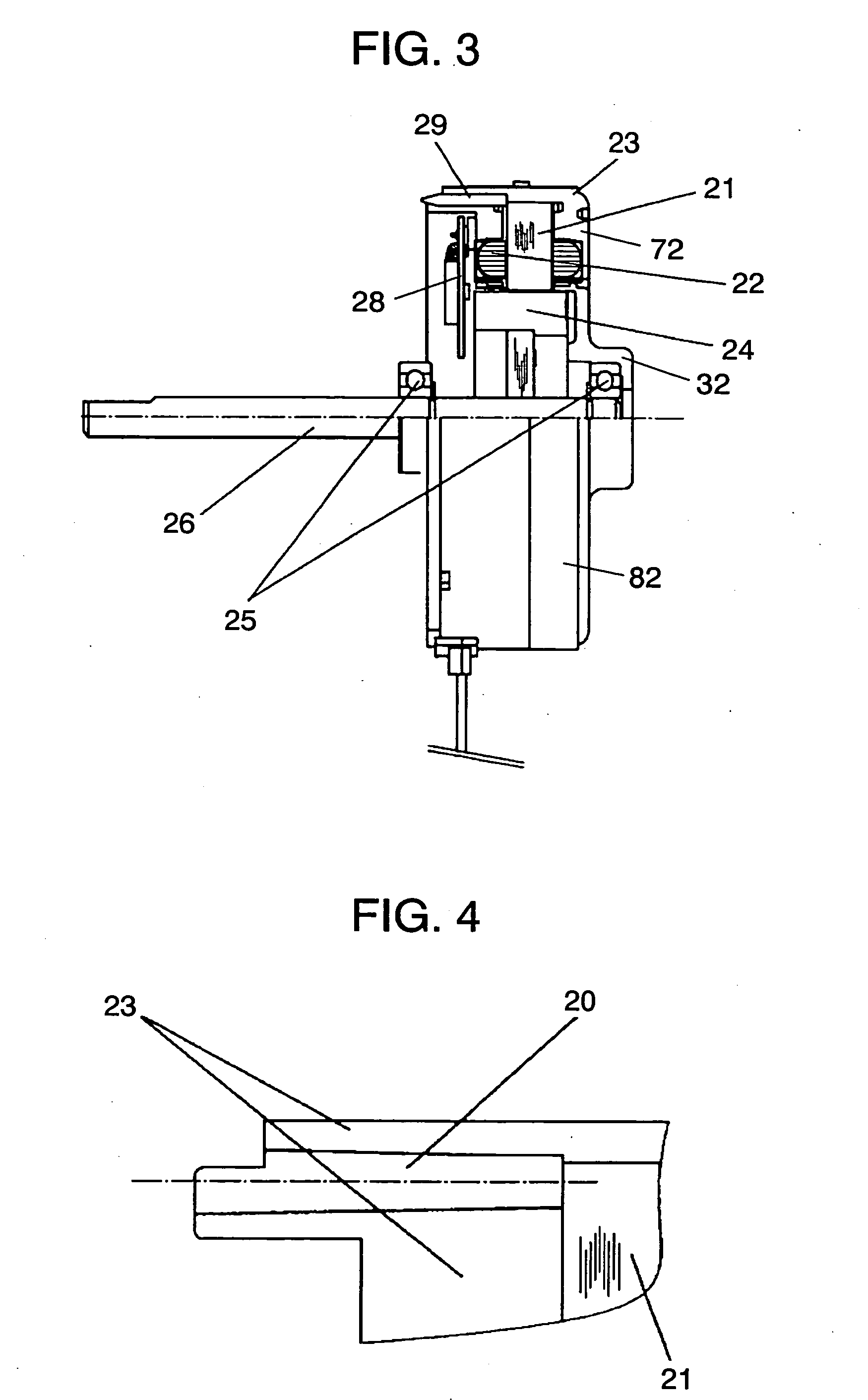Motor and electric apparatus equipped with same
a technology of motor and electric apparatus, applied in the direction of dynamo-electric machines, magnetic circuit shapes/forms/constructions, supports/enclosements/casings, etc., can solve the problems of differences in electric potential between individual structural components, no measures have been taken against electrolytic corrosion, and abnormal noise, so as to reduce the voltage and influence, suppress the development of electrolytic corrosion, and avoid the effect of electrolytic corrosion
- Summary
- Abstract
- Description
- Claims
- Application Information
AI Technical Summary
Benefits of technology
Problems solved by technology
Method used
Image
Examples
first exemplary embodiment
[0036]FIG. 1 is a partially sectioned structural view of a motor according to a first exemplary embodiment of this invention, and FIG. 2 is an enlarged sectional view showing a structure around a conductive pin (i.e., conductive member) shown in FIG. 1.
[0037] Motor 80 shown in FIG. 1 represents a fan motor for an indoor unit of an air conditioner (may be referred to hereinafter as “indoor unit motor”). In FIG. 1, motor 80 of this embodiment comprises stator 70 having stator core 11 and stator winding 12 wound on stator core 11 and integrally molded with insulation resin 13, rotor 14 provided with shaft 16, first bearing 151 and second bearing 152 for supporting shaft 16, bracket 17 connected to stator 70 and retaining at least one of first bearing 151 and second bearing 152, and conductive member 19 short-circuiting between stator core 11 and bracket 17.
[0038] Description is provided further of the structure of motor 80 in detail with reference to FIG. 1 and FIG. 2. Stator winding...
second exemplary embodiment
[0043]FIG. 3 is a partially sectioned structural view of a motor before a bracket is press-fitted according to a second exemplary embodiment of this invention, and FIG. 4 is an enlarged sectional view showing a structure around an insertion hole for a conductive pin (i.e., conductive member) shown in FIG. 3.
[0044] Stator winding 22 is wound on stator core 21 insulated with resin. Stator core 21 and stator winding 22 are integrally molded with insulation resin 23 to form stator 72. Printed wiring board 28 provided with a drive circuit for driving motor 82 is also molded together into one integral body in the same molding process. A complete molded body of stator 72 is thus composed with addition of printed wiring board 28. Insulation resin 23 used here is unsaturated polyester resin, that is a thermosetting plastic.
[0045] On the other hand, shaft 26 is press-fitted to rotor 24. In addition, two bearings 25 (i.e., first bearing and second bearing) are attached to shaft 26 for suppor...
third exemplary embodiment
[0050]FIG. 5 is a front view of a motor before a bracket is press-fitted according to a third exemplary embodiment of this invention, FIG. 6 a perspective view of a complete molded body (i.e., stator) according to the third exemplary embodiment, FIG. 7 an enlarged front view of a continuity check slit (i.e., notch) shown in FIG. 5, and FIG. 8 a front view of the motor shown in FIG. 5 after the bracket is press-fitted.
[0051] A stator winding is wound on stator core 31 insulated with resin. Stator core 31 and the stator winding are integrally molded with insulation resin 33 to form stator 73. Insulation resin 33 used here is unsaturated polyester resin, a kind of thermosetting plastic.
[0052] Bearing 35 is attached to shaft 36 of a rotor for supporting shaft 36 in a rotatable manner. After the rotor is assembled into stator 73, bracket 37 is press-fitted to stator 73 to complete motor 83. Motor 83 of this exemplary embodiment has such a structure that stator core 31 and bracket 37 ar...
PUM
 Login to View More
Login to View More Abstract
Description
Claims
Application Information
 Login to View More
Login to View More - R&D
- Intellectual Property
- Life Sciences
- Materials
- Tech Scout
- Unparalleled Data Quality
- Higher Quality Content
- 60% Fewer Hallucinations
Browse by: Latest US Patents, China's latest patents, Technical Efficacy Thesaurus, Application Domain, Technology Topic, Popular Technical Reports.
© 2025 PatSnap. All rights reserved.Legal|Privacy policy|Modern Slavery Act Transparency Statement|Sitemap|About US| Contact US: help@patsnap.com



